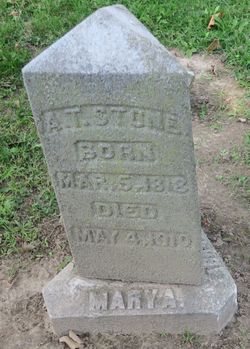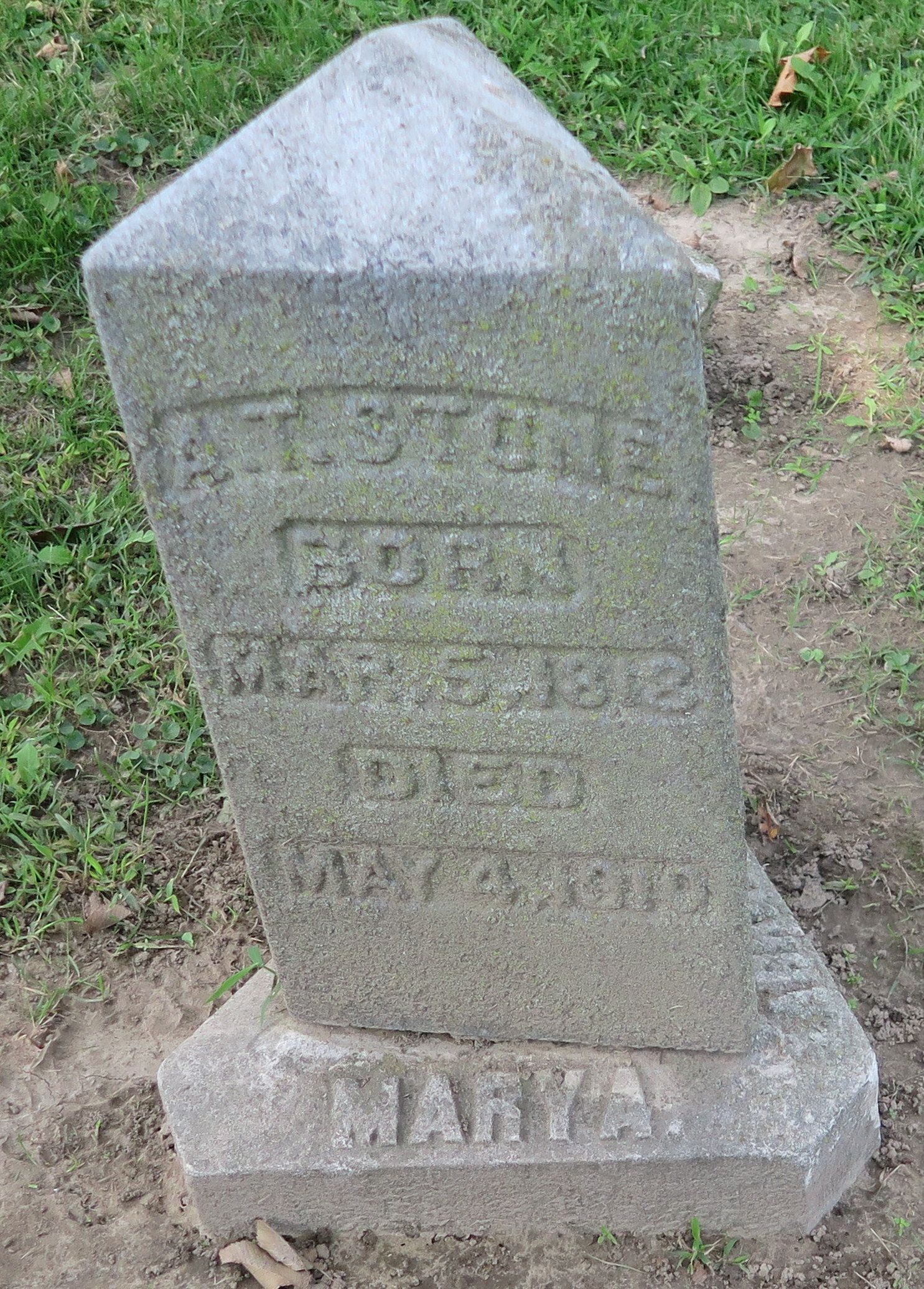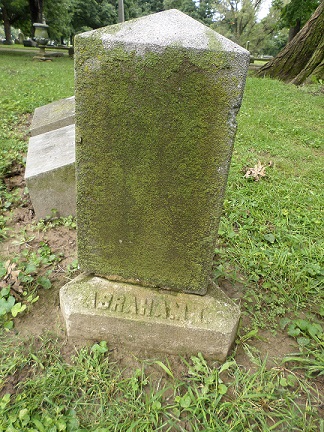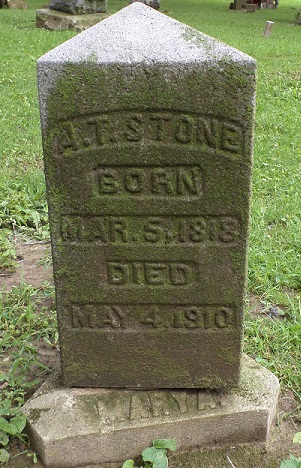“Abraham T. Stone was born March 5, 1818 in Licking county, Ohio, near Newark. He was the second
son of Samuel and Radoha Stone. He came to Illinois in the month of April,1822 (a month or two
before the founding of the village that afterward became Quincy) and located between Pigeon creek
and McCroncy creek, afterward called Stone’s Prairie. (Where he settled afterward became the village
of Shakerag, and afterward the present town of Plainville.) Following after his father, who was a local
preacher, he attended what was then known and called Dr. Nelson’s Institute, and, later, taught school
in Barry, where he formed the acquaintance of Mary Ann Lippincott, to whom he was married on
February 11, 1849, immediately after the marriage, settling on the farm on Stone’s Prairie, residing
there seventeen years.
During his farm life he spent the winter of 1849-50 in the legislature at Springfield. In 1857 he, with
his family, moved to Mt. Sterling, locating a home there and engaging in real estate and grain trade.
In the year 1859 he met Abraham Lincoln in Beardstown and drove him across the country to Mt.
Sterling to make a speech for the senatorship against Stephen A. Douglas, a friendship having been
formed years before during a stay together in Springfield. He was connected with Gov. Oglesby’s
staff and also connected with the Fifteenth regiment and displayed his interest in the progress and
development of the country he loved so well.
In March 1876, he went in company with T. J. Mitchell and S.S. Hughes to Ft. Peck, as agent of the
Government, appointed by U.S. Grant, then president of the United States. After returning home from
the west he was engaged as land commissioner and general excursion agent of the M.K.& T., also the
Missouri Pacific, Iron Mountain and Texas Pacific. He managed the business until the fall of 1890,
when his wife became an invalid and died a few years later, since when he had lived a quiet life.
In 1838, the first of the year, he united with the Methodist church. In 1853 he was licensed to preach. In
1857 he was ordained as deacon and in 1865 as elder of the church, and ever since held his place as elder
in the Methodist church. In 1866 he moved to Quincy, which has been his home until the present.
The Quincy Whig has been in his home since its first publication (nearly seventy-three years ago), as has
also been the St. Louis Advocate, his church paper.”
“Abraham T. Stone was born March 5, 1818 in Licking county, Ohio, near Newark. He was the second
son of Samuel and Radoha Stone. He came to Illinois in the month of April,1822 (a month or two
before the founding of the village that afterward became Quincy) and located between Pigeon creek
and McCroncy creek, afterward called Stone’s Prairie. (Where he settled afterward became the village
of Shakerag, and afterward the present town of Plainville.) Following after his father, who was a local
preacher, he attended what was then known and called Dr. Nelson’s Institute, and, later, taught school
in Barry, where he formed the acquaintance of Mary Ann Lippincott, to whom he was married on
February 11, 1849, immediately after the marriage, settling on the farm on Stone’s Prairie, residing
there seventeen years.
During his farm life he spent the winter of 1849-50 in the legislature at Springfield. In 1857 he, with
his family, moved to Mt. Sterling, locating a home there and engaging in real estate and grain trade.
In the year 1859 he met Abraham Lincoln in Beardstown and drove him across the country to Mt.
Sterling to make a speech for the senatorship against Stephen A. Douglas, a friendship having been
formed years before during a stay together in Springfield. He was connected with Gov. Oglesby’s
staff and also connected with the Fifteenth regiment and displayed his interest in the progress and
development of the country he loved so well.
In March 1876, he went in company with T. J. Mitchell and S.S. Hughes to Ft. Peck, as agent of the
Government, appointed by U.S. Grant, then president of the United States. After returning home from
the west he was engaged as land commissioner and general excursion agent of the M.K.& T., also the
Missouri Pacific, Iron Mountain and Texas Pacific. He managed the business until the fall of 1890,
when his wife became an invalid and died a few years later, since when he had lived a quiet life.
In 1838, the first of the year, he united with the Methodist church. In 1853 he was licensed to preach. In
1857 he was ordained as deacon and in 1865 as elder of the church, and ever since held his place as elder
in the Methodist church. In 1866 he moved to Quincy, which has been his home until the present.
The Quincy Whig has been in his home since its first publication (nearly seventy-three years ago), as has
also been the St. Louis Advocate, his church paper.”
Family Members
Sponsored by Ancestry
Advertisement
Explore more
Sponsored by Ancestry
Advertisement







